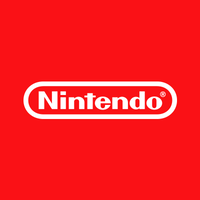In-Game Ads in 2019: Inside deltaDNA's Ad Survey Results Report
by on 7th Jan 2020 in News


It's easy to feel instinctively optimistic about in-game advertising.
In recent years there's been a powerful sense that in-game ads aren't simply an increasingly valuable means of income for developers and publishers; perhaps they're now understood and embraced by more consumers and industry figures than ever before. Furthermore, there is an ever more diverse spread of games, markets and consumers where ads are fitting. And now it feels like there are a greater number of platforms, approaches and tools through which to implement and manage ad strategy.
Instincts are one thing, of course, but what do the actual numbers say? To answer that question, we've poured through the Ad Survey Results 2019 report by game analytics and marketing platform outfit DeltaDNA.
It seems clear that ad usage by game developers is on the up, even if there is more nuance to that trend than a steady and linear increase of adoption. Of all the F2P developers and publishers surveyed for the report, 94% now use some form of in-game advertising in their titles. That contrasts to 87% of respondents in the 2018 survey. That may be down to the simple fact that so many games are now drawing a significant proportion of revenue from their ads. Observe the mobile gaming landscape, and it is clear that the monetisation approach is working for plenty of studios. That can only add to the appeal of in-game ads.
DeltaDNA found that in 2019 half of F2P casual and hyper-casual game developers and publishers made less than 40% of revenues from in-game ads, but were still using them. Meanwhile, a striking 13% make 81%-to-100% from ads. And in the hardcore and mid-core segment, significantly decreasing numbers are seeing ads generate less than 20% of revenues. in 2017 63% of those developers and publishers saw less than 20% of revenue come from ads. In 2018 that number dropped to 49%, and through 2019 it fell again to 44%.
In the diagram below you can see more detail around revenue split in F2P games.

Clearly, IAP is still an important revenue driver for numerous F2P developers and publishers. But what might actually be working in favour of the adoption of ads is the trend that sees less developers and publishers showing concern about the cannibalisation of IAP revenues by ads.
Through 2017, deltaDNA saw that only 27% of F2P developers and publishers were entirely unconcerned by the notion of in-game ads cannibalising IAP revenuers. By 2019, that number had risen to 45%. It is worth noting, however, that the number of those surveyed that are 'extremely' concerned remains almost unchanged, with 2017's 10% dropping just slightly to 9% by 2019.
Ads seemingly have a little work to do to convince all developers and publishers of F2P games of their merits.
Elsewhere in the survey it was found that 33% of respondents feel that in-game ads are a 'necessary evil'. Meanwhile, 16% understand adds to be an 'engagement blocker', and 15% are concerned they 'scare off' players. Still, 64% believe that in-game ads are an 'important monetisation opportunity'. 27% believe ads of this kind are 'vital to the gaming economy' (no relation), and some 19% are keen enough to be confident that in-game ads can enhance player progress. A shift in perception appears to be underway, even if there is much progress to be made.
Moving on to ad strategy, the picture through 2019 is a nuanced one. Overall, more developers are finding the confidence to deliver more ads per session. In 2018 'barely 20%' of F2P developers and publishers were willing to serve five or more ads per session. That number has climbed to 26% for the run through of 2019. Meanwhile, just 27% are now endeavouring to have players see one add or fewer per session, contrasted to a little over 30% in 2018, and 40% in 2017.
The following diagram from deltaDNA's report offers a little more insight on ad strategy across both the casual/hyper-casual and hardcore/mid-core sectors.

In terms of the type of in-game ads commonly deployed, rewarded video is clearly the most popular, with 82% of respondents using the approach. 57% use video or image interstitial ads, 34% go with banner ads, 19% embrace playables, 15% deploy an offer wall, and 10% opt for native ads. As the percentages here show, many F2P developers and publishers are using more than one in-game ad model.
Finally, when it comes to ad sources, most F2P developers and publishers prefer to use an ad exchange, or combine and ad network with their own cascade; 32% go with the former, and 26% with the latter. 23%, meanwhile, use a mediation partner, leaving 19% that pick an individual ad network in isolation.
This article only looks at some of the key findings from the report by deltaDNA, which in September last year was acquired by Unity. The full report is available for free here.
DeltaDNA compiled the data by speaking to 284 F2P developers and publishers, 10% of whom see DAU numbers clear 1,000,000. 62% of those surveyed focus on causal games, the most popular genre across the pool of respondents being match 3.
Ad TechAdvertiserAdvertisingAnalyticsApp StoresAudienceDeveloperDigital MarketingDisplayGamingHeader BiddingHyper CasualIn-AppInventoryMobileMonetisationPlayablesPublisherRewarded VideoTeamsUncategorizedUser AcquisitionVideoViewability







Follow TheGamingEconomy